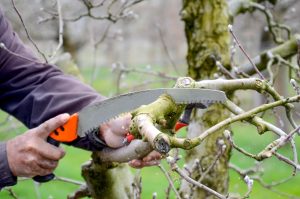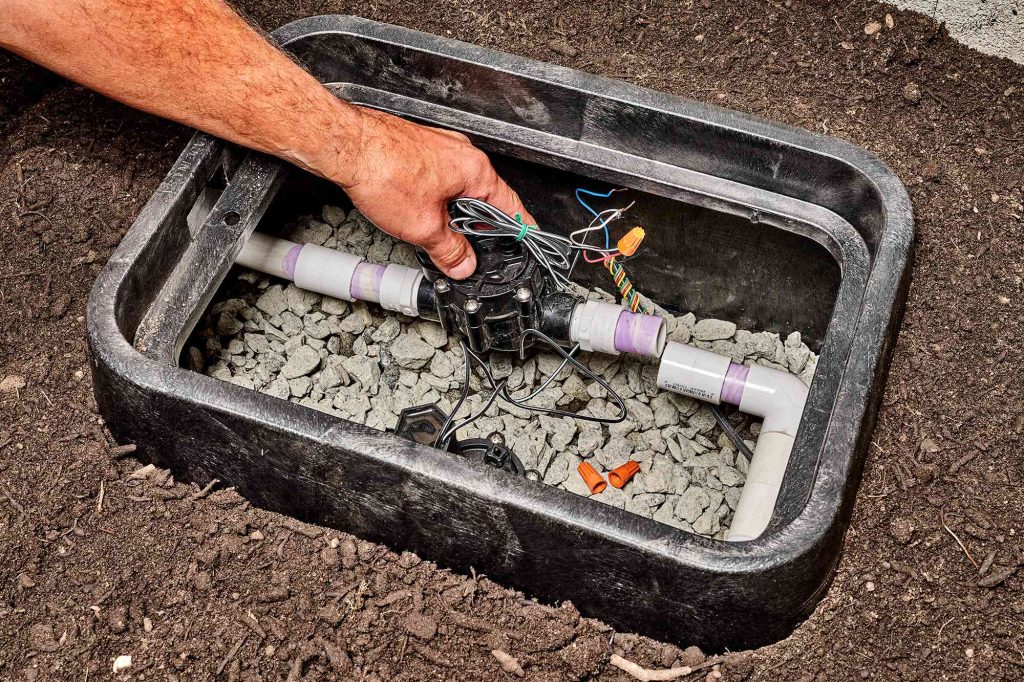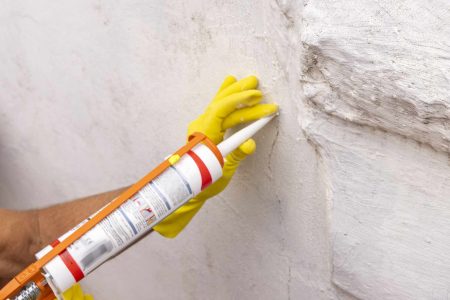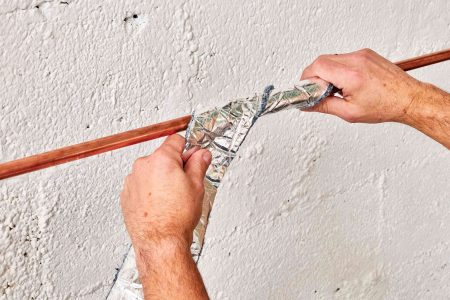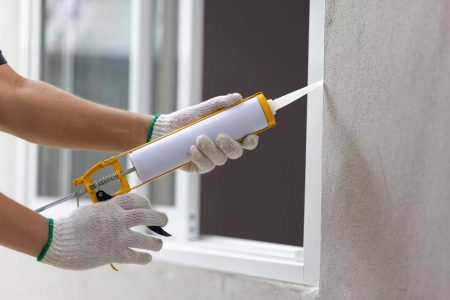The valves that are included in a lawn and garden irrigation system control water flow to specific zones within the system. These control valves are typically located inside a valve box, which may contain four or more valves, depending on the system layout. Common symptoms of a faulty valve include:
- Leaks around the valve or at the sprinkler head farthest from the valve (indicating the water doesn’t completely shut off)
- Inadequate water delivered to the sprinkler heads
- Sprinkler heads that simply don’t come on
Replacing a valve is a fairly easy job that requires basic plumbing supplies, though it does require some experience with joining PVC pipe with solvent cement. The most important part of this project is getting an exact replacement part for the sprinkler valve. Determine the type and size of the valve, or remove it and bring it to the store with you. When selecting the new valve, make sure the PVC adapters fit the valve sockets before leaving the store. These adapters have a male threaded end to attach to the valve and a female slip-fit end designed to be solvent-glued to the PVC irrigation pipe.
Before You Begin
Shut off the water to the irrigation system by rotating the valve handle on the main supply pipe of the system. The valve is closed when the handle is perpendicular to the pipe. If there is no shutoff valve for the irrigation system, you may have to shut off the water at the home’s main shutoff or the water meter.
What You’ll Need
Equipment / Tools
- Smartphone or camera (optional)
- Reciprocating saw, PVC pipe cutter, or hacksaw
- Utility knife or sandpaper
- Tongue-and-groove pliers
Materials
- New sprinkler valve
- PVC MIP adapters (2 or more, as needed
- Plumber’s tape (thread-seal tape)
- PVC primer and solvent glue
Instructions
-
Disconnect the Wiring
Note where the low-voltage wires are attached to the old sprinkler valve. This is important because you must connect the wires to the new valve in the same way. It’s a good idea to arrange the wires so that each can be seen clearly, then take a photo of the wiring with a smartphone or digital camera.
When you’re ready, disconnect the wires from the sprinkler valve.
-
Remove the Old Valve
Cut through the PVC irrigation pipes just below the old PVC adapters, using a reciprocating saw, hacksaw, or PVC pipe cutter. Cut as close as possible to the old fittings to conserve the maximum amount of pipe length. The new sprinkler valve will be only slightly lower than the old one.
Remove all plastic burrs around the cut edges with a utility knife or sandpaper, being careful not to let the debris drop into the pipes.
-
Prepare the New Valve
Install the new PVC male (MIP) adapters into the new sprinkler valve by wrapping plumber’s tape around the threaded end of each adapter and threading it onto the valve socket. Tighten the adapters with tongue-and-groove pliers, being careful not to over-tighten them, which can crack the plastic parts.
-
Install the New Valve
Apply PVC primer and solvent glue to the insides of the female adapter sockets and the outsides of the pipe ends, following the manufacturer’s instructions.
Fit the new valve onto the pipes, pushing down until the pipes are seated fully into the adapter sockets. Let the PVC solvent glue dry as directed by the manufacturer (usually two hours before testing).
-
Connect the Wiring and Test
Connect the wires to the new valve in the same configuration that was used with the old valve. Turn the water back on by slowly rotating the shutoff valve’s handle so it is parallel to the supply pipe. Check the valve and all connections for leaks.
Verify that you installed the wires correctly by making sure the timer works with the new valve.
Read the full article here

